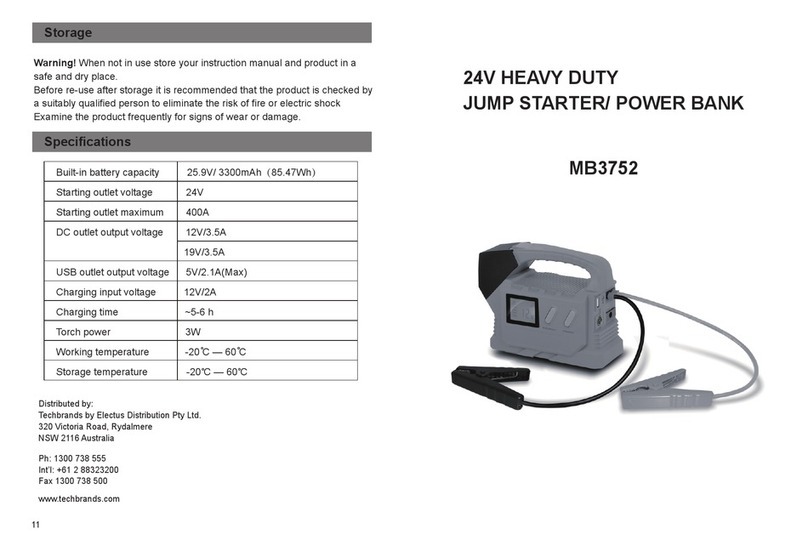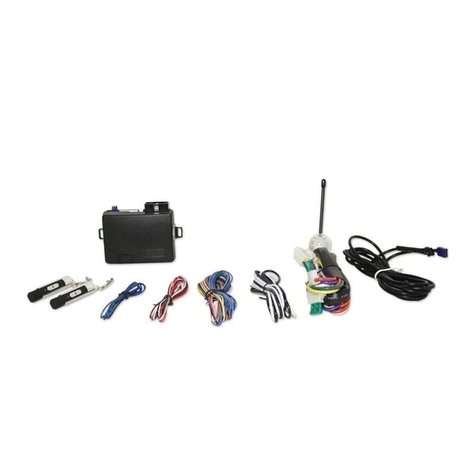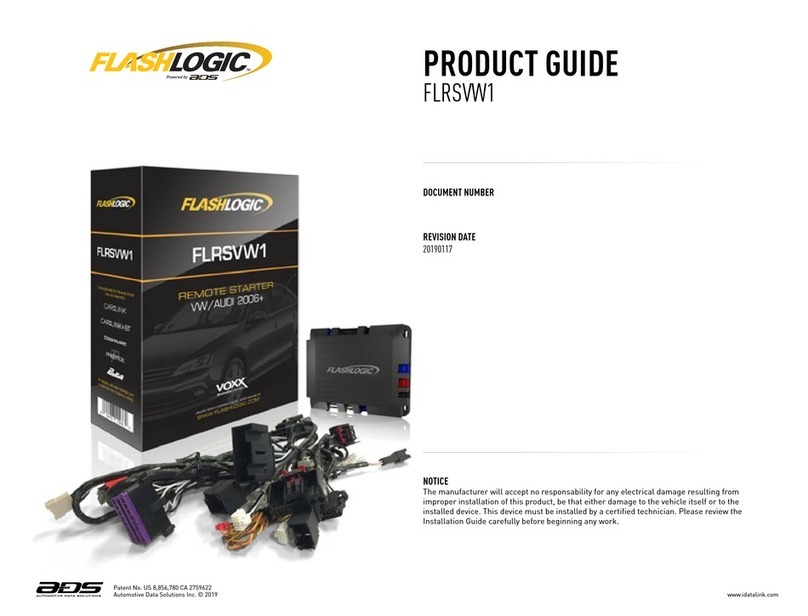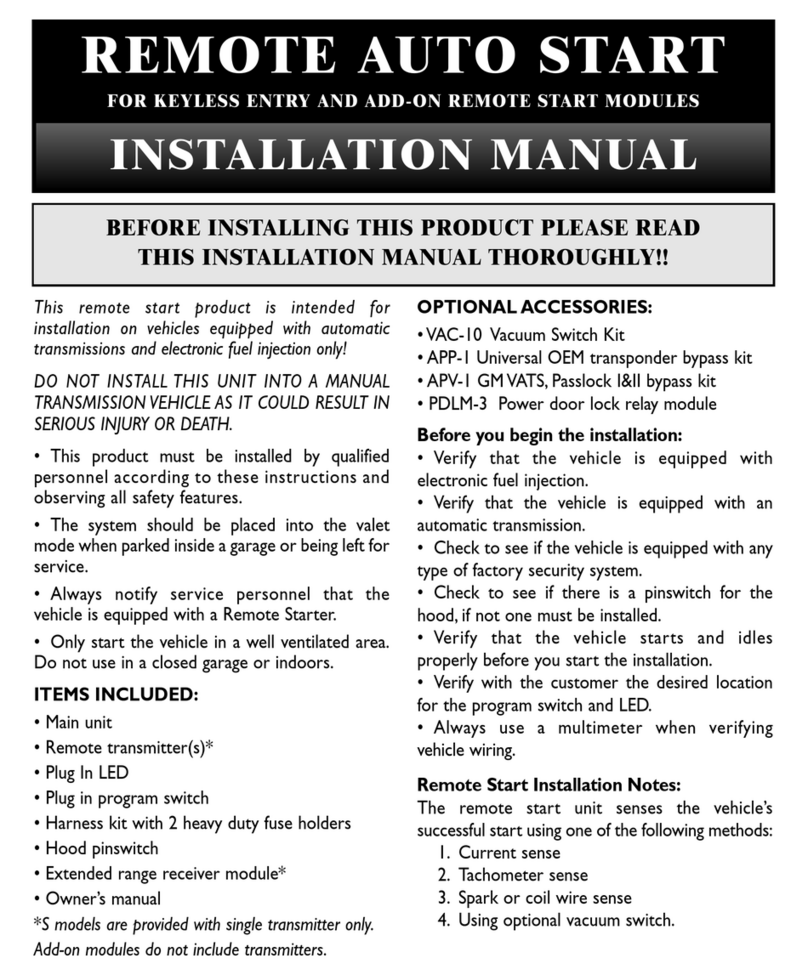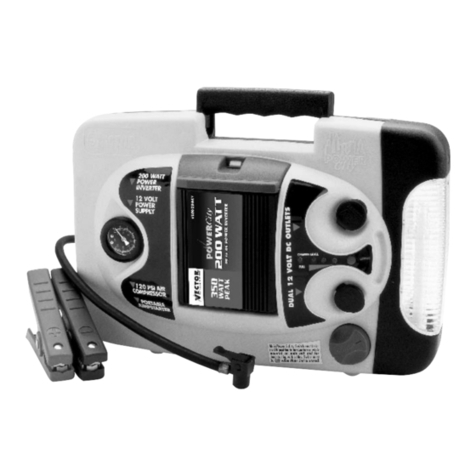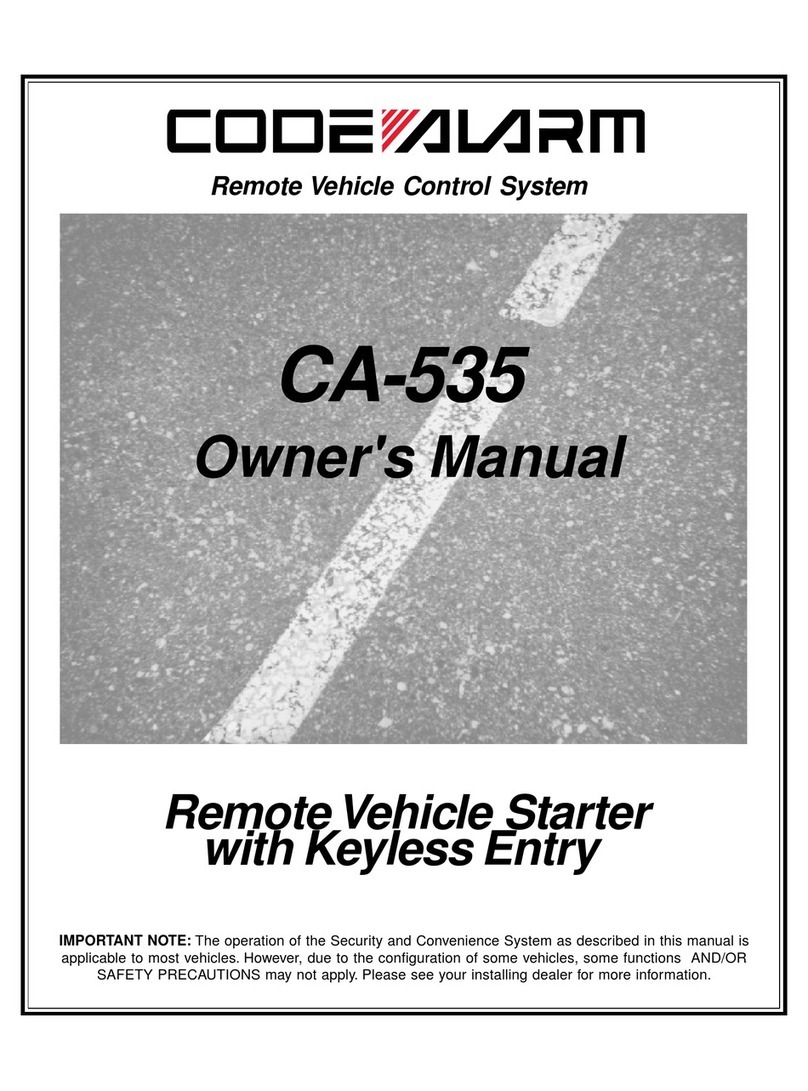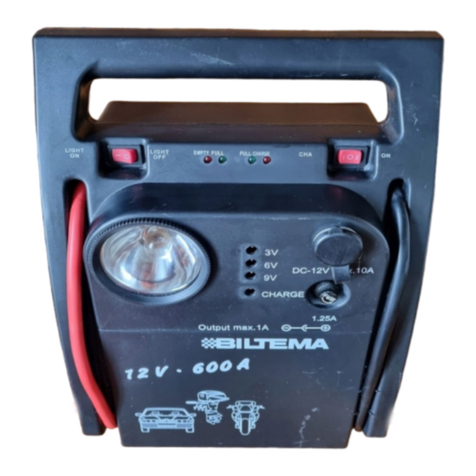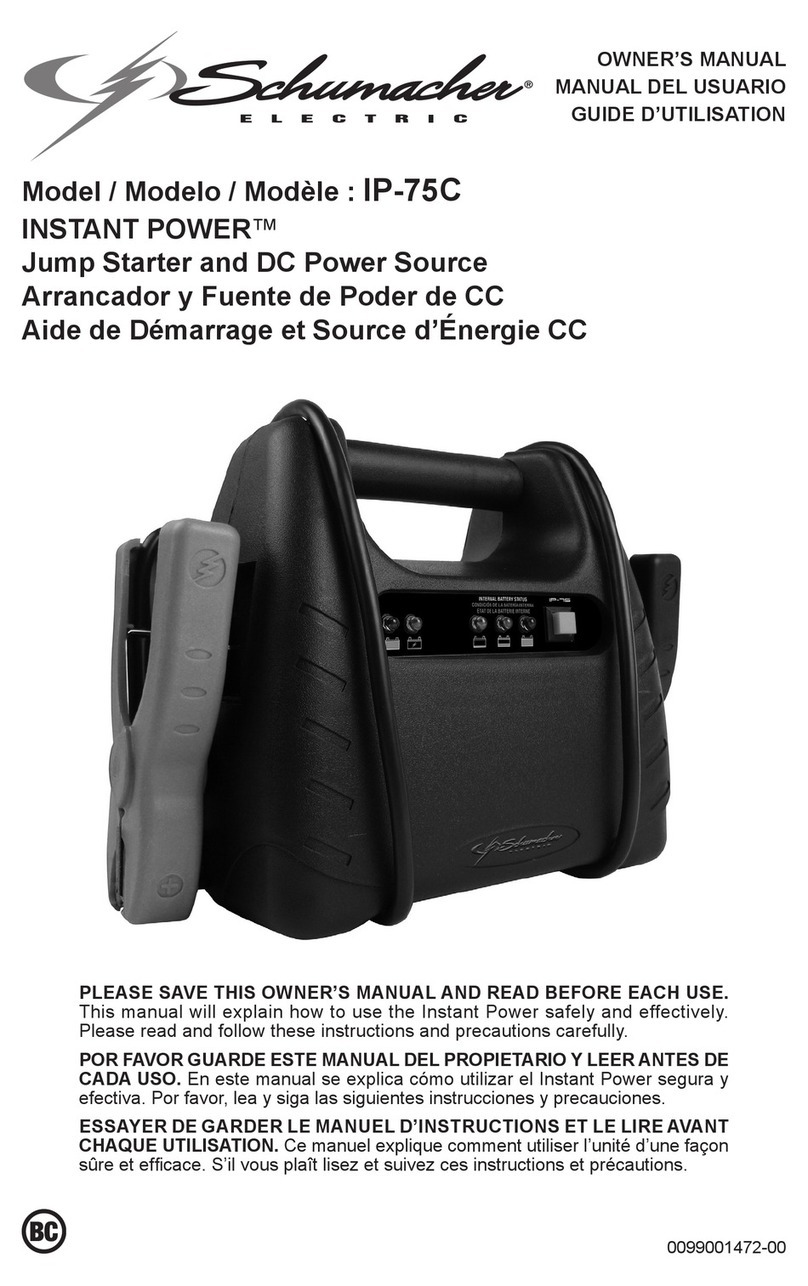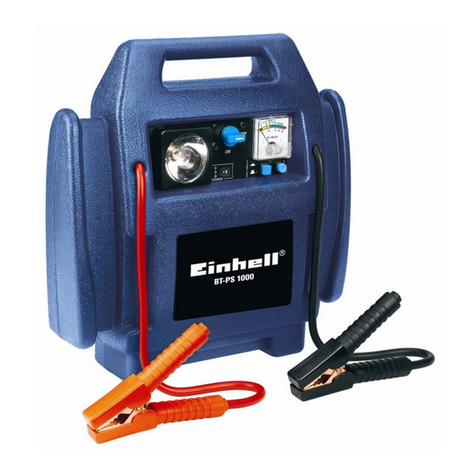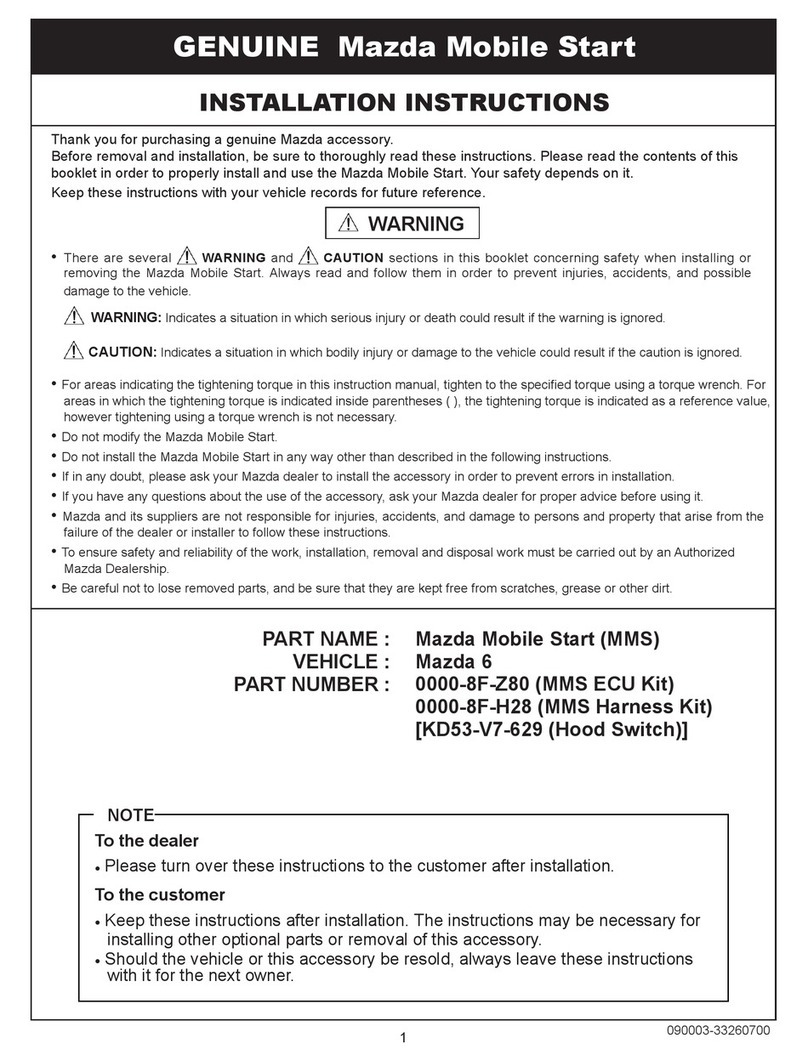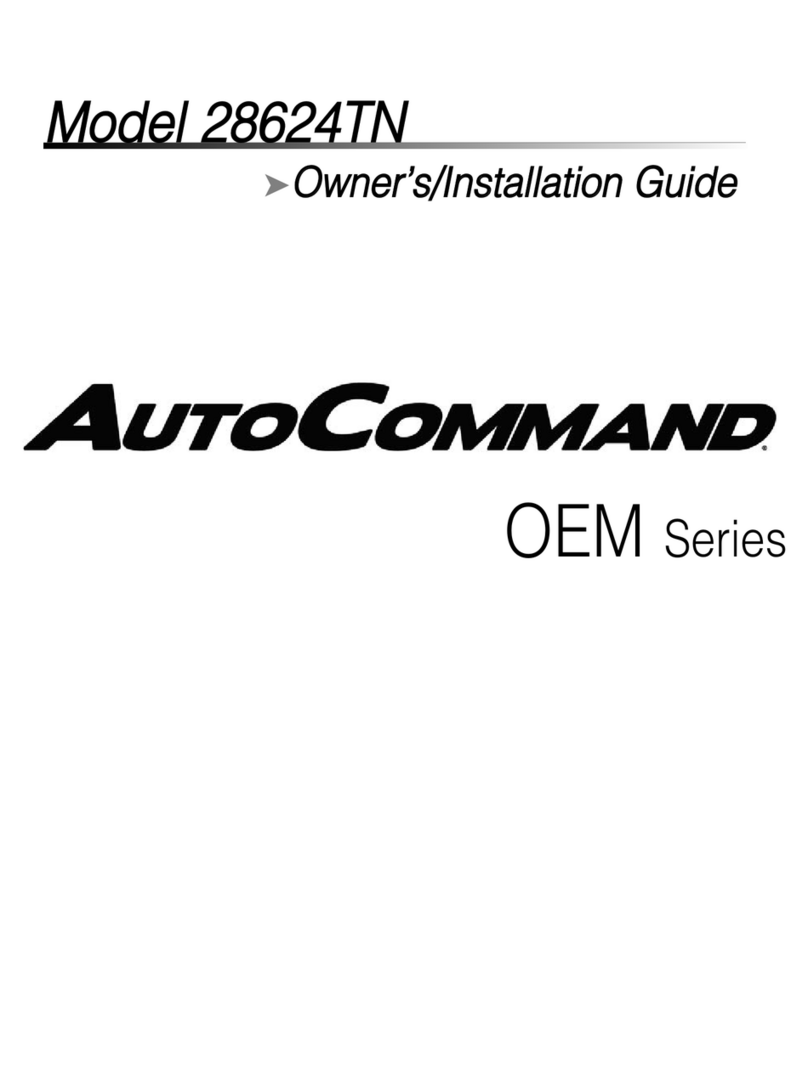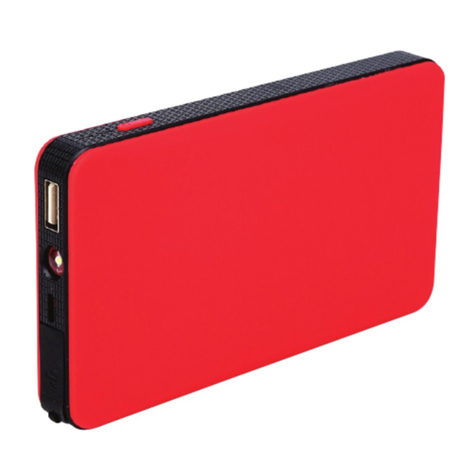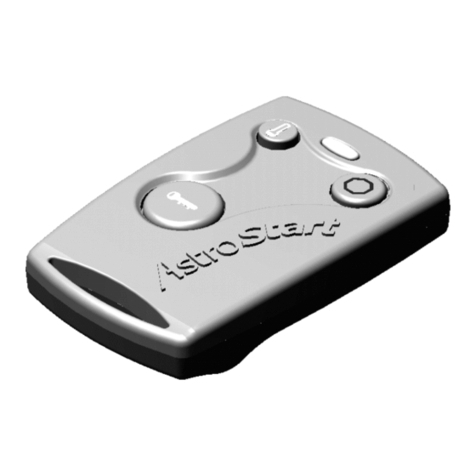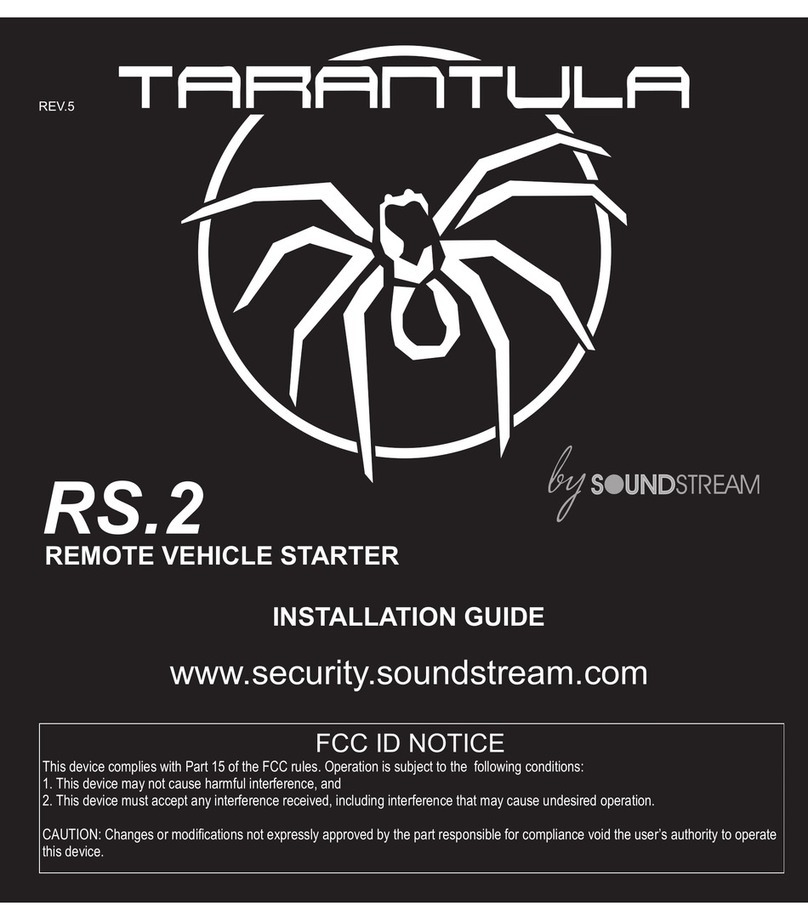
4
PERSONAL PRECAUTIONS
Someone should always be within range of your voice or close enough to come to your
aid when you work near a lead-acid battery.
Have plenty of fresh water and soap nearby in case battery acid contacts skin, clothing
or eyes. Protective eyewear should always be worn when working near
lead-acid batteries.
If battery acid contacts skin or clothing, wash immediately with soap and water. If acid
enters eye, immediately flood eye with running cold water for at least 10 minutes and
get medical attention immediately.
Be extra cautious to reduce risk of dropping a metal tool onto a battery. It might spark
or short circuit the battery or another electrical part that may cause explosion.
Remove personal metal items such as rings, bracelets, necklaces and watches when
working with a lead-acid battery. A lead-acid battery can produce a short-circuit current
high enough to weld a ring or the like to metal, causing a severe burn.
Use the POWERLIGHT RESCUE for jump starting lead-acid batteries only. Do not use
for charging dry-cell batteries that are commonly used with home appliances. These
batteries may burst and cause injury to persons and damage to property.
NEVER charge or jump start a frozen battery.
To prevent arcing, NEVER allow clamps to touch together or to contact the same piece
of metal.
IMPORTANT SAFETY INSTRUCTIONS
Use of an attachment not recommended or sold by the manufacturer may result in a
risk of damage to the unit or injury to personnel.
When using the wall charger or power extension cord, pull on the plug and never on
the wire when disconnecting.
Do not recharge the POWERLIGHT RESCUE with a damaged wall charger or power
extension cord. Replace them immediately.
The POWERLIGHT RESCUE may be used under any weather condition – rain, snow,
hot or cold temperatures. Do not charge the POWERLIGHT RESCUE in temperatures
below 40˚F (4˚C).
Do not submerge in water.
Do not operate with flammables such as gasoline, etc.
If the POWERLIGHT RESCUE receives a sharp blow or is otherwise damaged in any
way, have it checked by a qualified service person. If the POWERLIGHT RESCUE is
leaking battery acid, do not ship it. Take it to the closest battery recycler in your area.
Do not disassemble the POWERLIGHT RESCUE. Have it checked by a qualified
service person.
The POWERLIGHT RESCUE should never be left in a completely discharged state for
any period of time. Damage to the battery could be permanent, with poor performance
as a result. When not in use, recharge every three (3) months.
